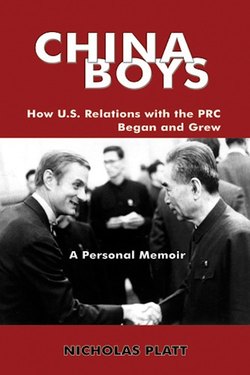Читать книгу CHINA BOYS: How U.S. Relations With the PRC Began and Grew. A Personal Memoir - Nicholas MD Platt - Страница 39
На сайте Литреса книга снята с продажи.
6 Signs and Signals Signs of Change
ОглавлениеMy first chore as junior man on the Mainland China desk at State was to chronicle the achievements of Lyndon Johnson’s China policy. Every bureau in the executive branch was given an equivalent task during the waning months of LBJ’s presidency. The result, a slim volume at best, was revealing. Digging into the files since 1964, I found that every initiative to improve relations with Beijing—proposals for exchanges in journalism, sports, education, and culture, as well as ideas to resume trade and new approaches to the talks in Warsaw—had only gotten as far as Secretary of State Dean Rusk’s inbox before being returned without action. The Chinese, embroiled in the Cultural Revolution and dominated by radicals, would not have been interested. Neither, apparently, was Secretary Rusk.
After President Nixon took office in early 1969, the office of the new Secretary of State, William P. Rogers, called for new China initiatives. We dusted off the previous proposals and sent them forward. This time they were not returned but disappeared, apparently sent to the White House for consideration. The change was striking. Something was up. We had all noted the 1967 Nixon article in Foreign Affairs calling for a new approach to China, but had no inside knowledge of the new President’s thinking.
The “bifurcated airgram” from Hong Kong had made my reputation as a China analyst. In March 1969, I was asked to head the division in the Bureau of Intelligence and Research (INR) that covered the People’s Republic of China (PRC), and, later, other countries in Northeast Asia. My new boss, once again John Holdridge, left shortly after I arrived to join Dr. Henry Kissinger ’s staff at the National Security Council, another sign of White House interest in China. Happily, I was able to persuade another old mentor from Hong Kong, Bill Gleysteen, to replace Holdridge in INR.
Our “watching” in Hong Kong had focused purely on what was happening in China. In Washington, our analyses’ main purpose was to help decision makers deal with policy issues. The most important among these were
—developments in the heated Sino–Soviet dispute and
their significance for U.S.-China relations;
—the evolution of China’s leadership after the violent
phase of the Cultural Revolution;
—China’s attitudes toward Taiwan; and
—the growing momentum of the campaign by the People’s Republic to replace Chiang Kai-shek’s Republic of China at the United Nations.
My office also prepared background material for sessions of the Warsaw talks, which resumed quietly in early 1970, another sign of changing attitudes in both Washington and Beijing.
I was now a boss, supervising the work of five analysts and two secretaries. The analysts ranged from crusty, learned senior civil servants like Edward Jones to young Foreign Service officers just starting to specialize in Asian affairs. Lynn Pascoe, later ambassador to Indonesia and UN undersecretary general, was a feisty new star. We were a tiny publishing company, producing papers on demand from senior officials, including Secretary Rogers and Assistant Secretary Marshall Green, participating in preparing larger policy papers like National Security Study Memoranda (NSSM), and representing the State Department on the interagency intelligence community committees that produced National Intelligence Estimates. I was a combination writer, editor, briefer, and salesman for our products around the bureaucracy. In addition, I was expected to maintain my academic contacts in the China-Watching community, and project State Department thinking in public speaking appearances around the country.
Putting a human face on intelligence analysis struck me as a good idea. I enjoyed not being hidden. More important, I found that I could make a more cogent analysis to the policy makers once I had explained our thinking in terms understandable to public audiences. Regional Councils on Foreign Relations, specialist audiences at universities, and the different War Colleges were eager for speakers, and I welcomed the chance to travel the country after six years away. I also taught a seminar at my old graduate school, the Johns Hopkins School of Advanced International Studies, called “Communist China: The Aftermath of the Cultural Revolution” during the fall semester in 1969.
I also had secret duties. The first of these was to interview the highest-ranking Chinese defector to the United States, the number two man from the PRC embassy in The Hague, who had changed sides in late January 1969. The intelligence community was intensely curious about what he knew. The State Department wanted its own access and sent me to have a talk.
Five minutes of conversation in the suburban Virginia safe house where the diplomat was hidden confirmed that the answer was zero. He was too far removed from Beijing to hear even gossip about Chinese leadership attitudes and moves or anything else of priority interest. So we spent the rest of our time together comparing notes on how Chinese and Westerners got their information about China and its leaders. I was fascinated and even comforted to learn that a Middle Kingdom bureaucrat read the People’s Daily the same way I did, focusing on the first and last pages (in villages and city streets, these are the ones posted on the public walls), searching editorials for unfamiliar formulations, analyzing who stood where in photographs, and other tricks of the trade.
